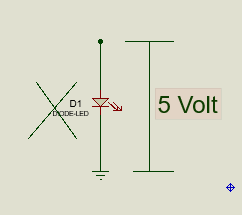Resistance
If you want to construct an electronics project at you must have to know the use of Resistance.
You can understand the function of resistance from ohm’s law. If Resistance (R)= Voltage across the resistance (V) / Current passing through the resistance (I), i.e. R=V/I
this equation answers all questions, Why, How, when we have to use a resistance.
Suppose, you want to construct a 5 Volt regulated Power Supply with an LED indicator. Then how to connect the LED?
- If you connect the LED directly to output, LED will be damaged very shortly. Because the LED have to withstand 5 Volt in it. But Max Forward Voltage for the simple LED is approximately 3 Volt. So, we have to prevent extra (5 V – 3 V) = 2 Volt (at least).

- Now, to prevent 2 Volt we have to use a resistance R. The value of R can be calculated if we know the value of current passing through the resistance. Current passing through the resistance will be same as the current consumed by the LED at maximum power. We can find the value of Maximum Current Imax of LED from data sheet.
Let, Imax LED is 0.020 Amp. So, the value of the resistance will be calculated from R=V/I
i.e. 2V/0.020A = 100 Ohms and as the Maximum power dissipation is 2Vx0.02Amp=0.04Watt.
So, we have to use a 100 Ohms resistance with 1/8Watt (or more) capacity to construct LED indicator in 5 Volt regulated PS

